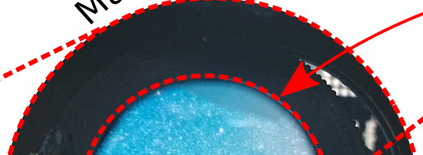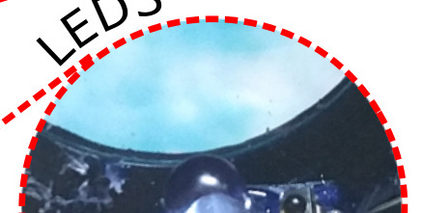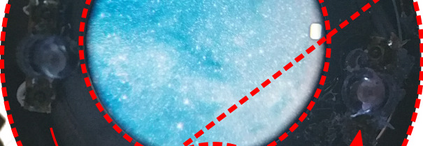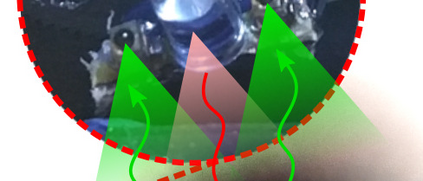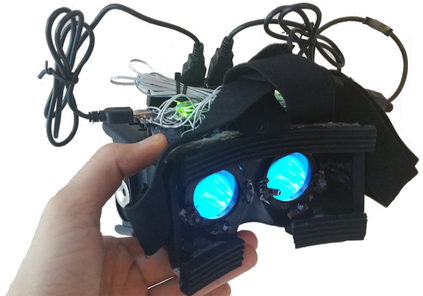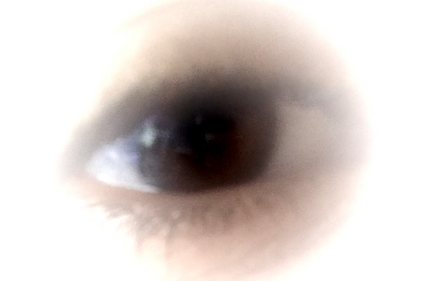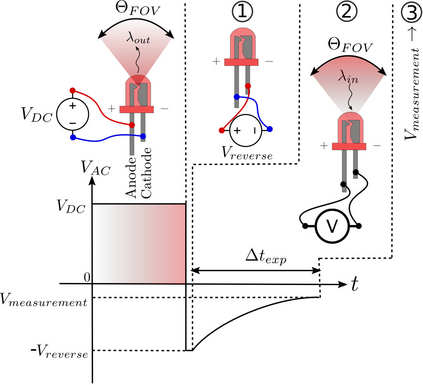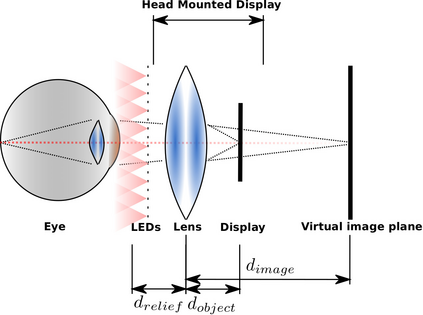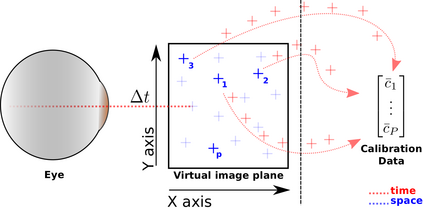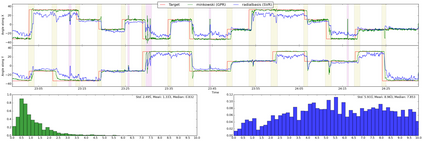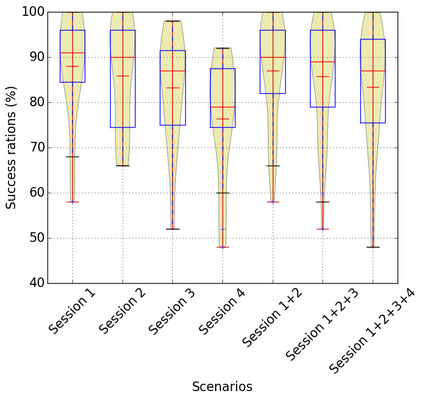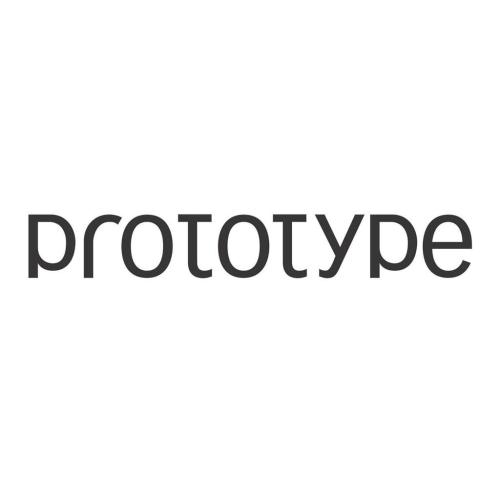We introduce a new gaze tracker for Head Mounted Displays (HMDs). We modify two off-the-shelf HMDs to be gaze-aware using Light Emitting Diodes (LEDs). Our key contribution is to exploit the sensing capability of LEDs to create low-power gaze tracker for virtual reality (VR) applications. This yields a simple approach using minimal hardware to achieve good accuracy and low latency using light-weight supervised Gaussian Process Regression (GPR) running on a mobile device. With our hardware, we show that Minkowski distance measure based GPR implementation outperforms the commonly used radial basis function-based support vector regression (SVR) without the need to precisely determine free parameters. We show that our gaze estimation method does not require complex dimension reduction techniques, feature extraction, or distortion corrections due to off-axis optical paths. We demonstrate two complete HMD prototypes with a sample eye-tracked application, and report on a series of subjective tests using our prototypes.
翻译:我们为登机头显示器(HMDs)引入了一个新的瞄准跟踪器。 我们用光线光线二极管(LEDs)对两个现成的HMDs进行了修改, 使两台现成的HMDs采用光光光光光光光光光光光显示二极分光显示器(LEDs), 我们的主要贡献是利用LED的感知能力, 为虚拟现实应用创建低功率的视光跟踪器(VR) 。 这产生了一种简单的方法, 使用轻量的受监督高斯进程回归(GPR) 在一个移动设备上运行的最小硬件, 实现精确和低潜值。 我们用我们的硬件, 显示基于 GPR 执行的 Minkowski 距离测量器比通常使用的以辐射基函数为基础的支持矢量回归(SVR) 强, 而不需要精确确定自由参数。 我们显示, 我们的视觉估计方法不需要复杂的尺寸降低技术, 特征提取, 或偏差校正, 因为离光路。 我们演示了两个完整的HMD原型的完整的HMD原机, 并报告一系列使用原型的主观测试。


